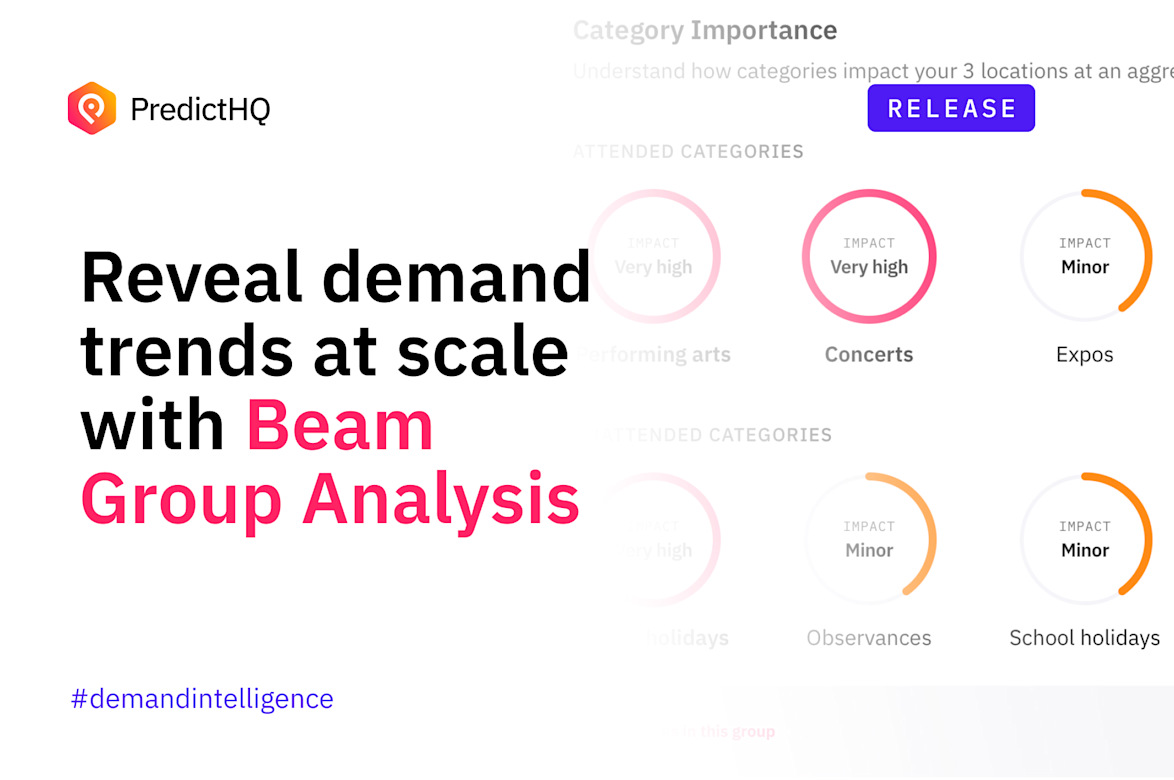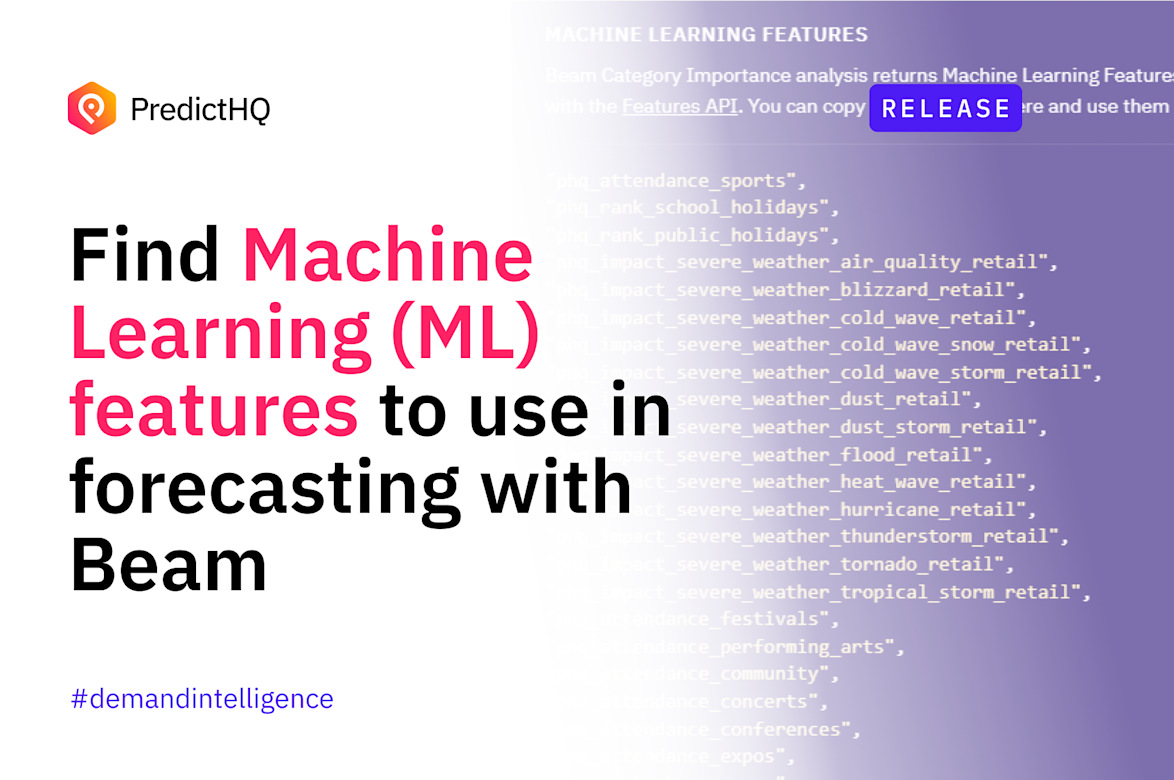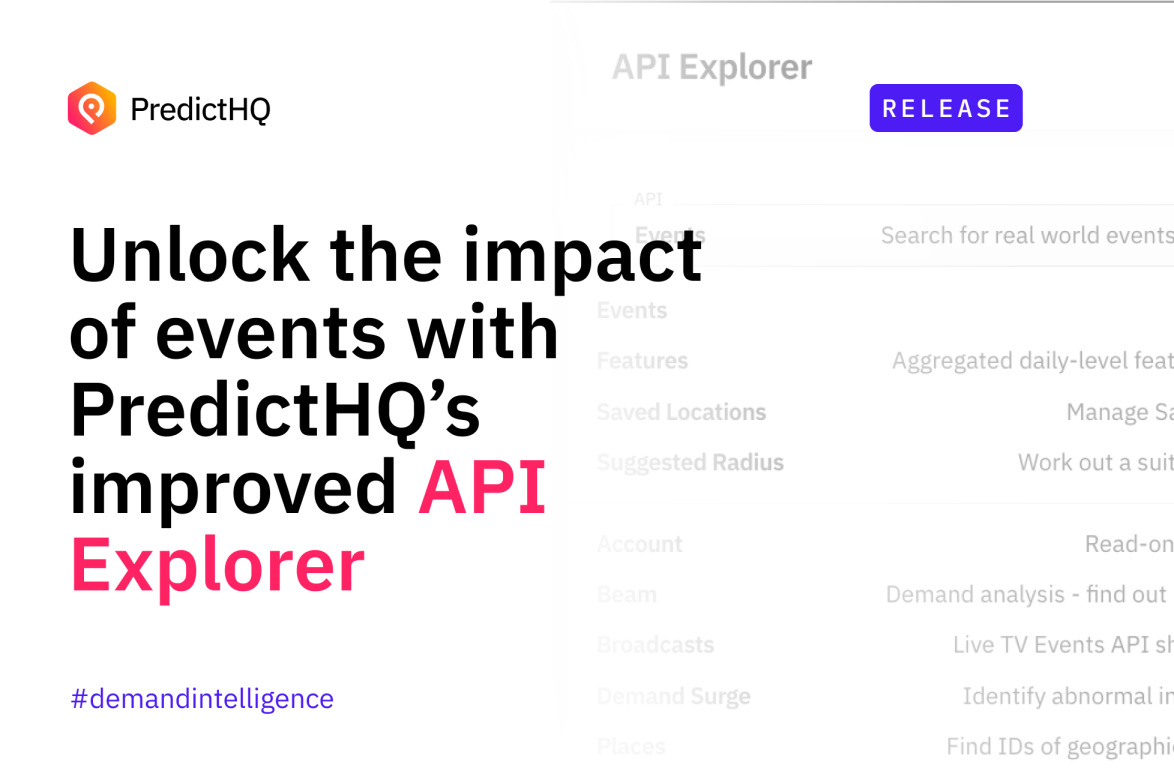Introducing Academic Events: New Event Category Now in Beta

If your business sells to young people, the difference between a school week and a holiday week can be enormous. Overnight, thousands of your potential customers can head out of town and out of reach, leaving your stock to go to waste and your sites substantially overstaffed.
There are more than 20 million college and university students in the United States alone, estimated to have combined discretionary spending power of $212 billion per year.
We recently signed up some leading food chains and on-demand companies, which have college students as a key target market. They requested academic events as a category – because this type of event data isn’t available anywhere as an aggregated data set. This is because of the complexities of sourcing this data – almost every institution has its own unique format for this data so it all needs to be standardized.
However, intelligent event data is our speciality so we are thrilled to today announce our new event category Academic Events is in beta – covering many colleges and universities in the United States and a path to all size-able colleges in the US by the end of this year.
Our Academic Event Coverage
We identify, verify and rank academic events such as study sessions, exams and breaks, which have major impact on business – especially retail, food retail and transport businesses.
We cover:
Sessions
Intensive sessions such as summer school
Exams
Holidays
Graduations
Key social events such as homecoming
At this stage, we are only offering this category in the United States, covering more than 500 institutions across 20 states. These states include New York, Texas, Pennsylvania, Virginia, North Carolina, Florida, Ohio and more.
We will have full coverage of the United States by the end of 2020, and plan to expand our coverage into Europe in 2021.
It’s important to note we cover the colleges with 5,000 or more full time undergraduate students. This is because smaller institutions have less impact on demand for our customers. We also don’t cover primarily online institutions – as their students are distributed outside of the geographical area that is relevant for tracking potential demand.
This still creates a sizable list of institutions per state. For example in the small state of Connecticut, more than 146,000 students will attend the 17 institutions we track this year.
These universities and colleges include:
Central Connecticut State University
Eastern Connecticut State University
GateWay Community College
Fairfield University
Housatonic Community College
Manchester Community College
Naugatuck Valley Community College
Norwalk Community College
Quinnipiac University
Sacred Heart University
Southern Connecticut State University
University of Bridgeport
University of Connecticut
University of Hartford
University of New Haven
Western Connecticut State University
Yale University
How we rank Academic Events
We rank each academic event specifically, rather than declaring all session breaks to have the same impact. These rankings factor in the amount of full time equivalent students, the percentage of the specific student body for events such as intensive sessions as well the historical and verified total of attendees at social and graduation events.
These details are fed into our extensive ranking models that draw on a wide range of machine learning models as well as our years of verified historical data to generate a logarithmic scaled ranking from 0 to 100.
How companies use Academic Events in their forecasting
Whether a company uses our intelligent event data to improve demand forecasting, pricing or staffing plans, knowing when large amounts of young adults will arrive and leave locations is powerful information. Our retail and transport customers have found academic events particularly valuable, using them in a range of ways:
Decreasing stock for spring break to ensure minimal overstocks and wastage – for example a large coffee chain can reduce the number of baked goods and snacks they have in stock to minimize waste.
Ensuring you have enough staff and optimizing labor during exams, graduation and session start weeks, which can be particularly busy.
Ensuring you have enough assets or drivers near key transport hubs as students return and leave for each break or head to key social events.
Creating targeted marketing strategies for particular stores or locations near students that fit their situation such as home coming or parents’ weekend.
For any company selling to young people, knowing when thousands of young people (and often their families too) will be leaving or arriving is powerful demand intelligence.




